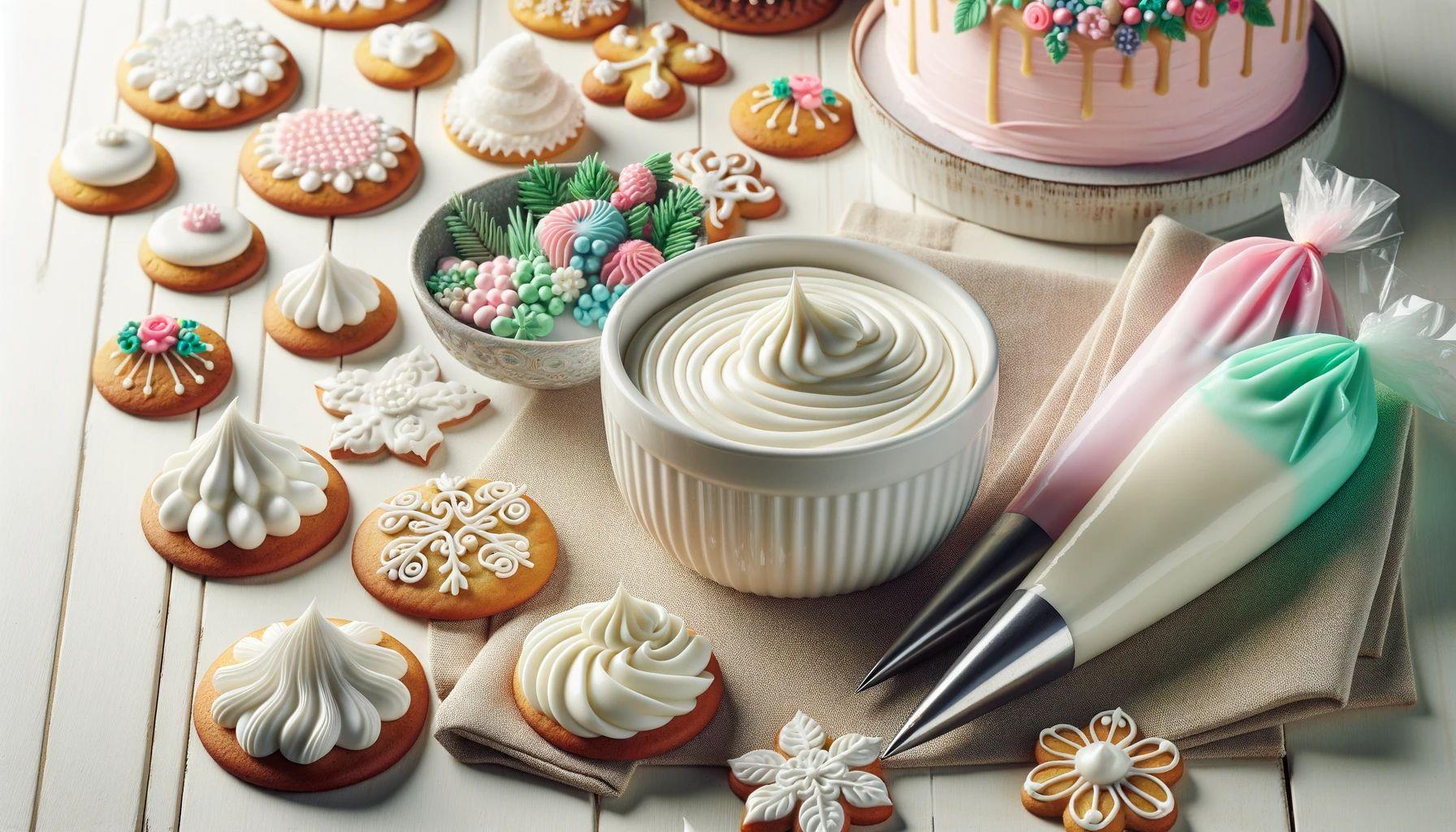Royal Icing
Royal icing is an incredibly versatile and essential ingredient in any baker's repertoire. It's perfect for icing cookies, embellishing cakes, and even assembling or decorating gingerbread houses.

Note: The image shown is a serving suggestion. Your final dish may vary in appearance based on the specific ingredients used and individual preparation methods.
INGREDIENTS
INSTRUCTIONS
In a large bowl, combine the sifted confectioners' sugar, warm water, powdered egg whites, and vanilla extract. Beat with an electric mixer on high speed for 5 to 7 minutes until the mixture forms stiff peaks and the icing is fluffy and glossy.
To color the icing, transfer 1/2 cup of icing into a separate bowl. Stir in 3 to 4 drops of food coloring until evenly distributed and the icing is smooth. Add more drops as needed to achieve the desired color. Keep the remaining icing covered with a damp cloth to prevent it from drying out.
To ice cookies, set a cooling rack over a foil-lined baking sheet. Spoon the icing onto cookies using a teaspoon, or apply it with a new small paintbrush for a more precise application. Place the iced cookies on the cooling rack to dry.
If desired, use contrasting colors for decoration. Put a small amount of contrasting icing in a small resealable plastic bag. Snip off a tiny corner of the bag and squeeze out the icing to create designs on the cookies. Allow the icing on the cookies to dry thoroughly before stacking.
TIPS AND TRICKS
- For plain royal icing, simply omit the food coloring.
- Use the icing shortly after preparing it. Do not refrigerate, as it will start to harden.
- If you add contrasting icing to a cookie before the base layer dries, the colors will blend slightly, creating a more subdued design.
- Allow the icing to completely dry before storing the cookies in airtight containers.
Comments
Add new comment